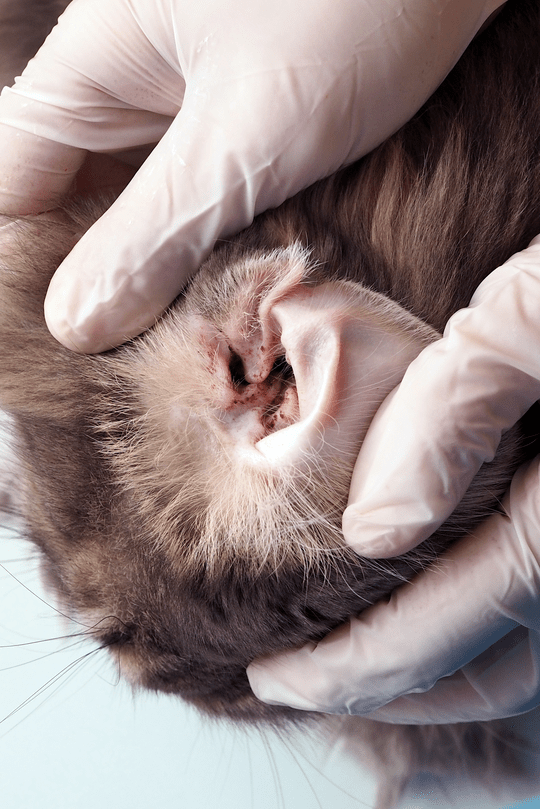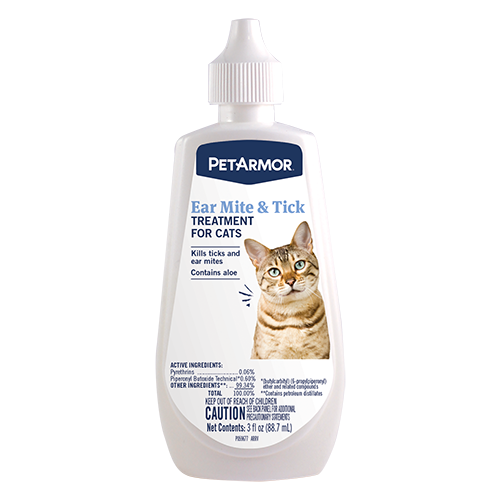It’s no secret your pet appreciates some good ear scratches. And humans and animals I’m sure can all agree that there’s no better feeling than getting an itch you can’t reach, scratched. But if you as a pet parent begin to notice your pet start to scratch a little too much, your pet may have a mite-y problem on their paws.
No really, an ear mite problem.
One of the most common problems pet parents face with their dog or cat are ear health issues. And without the proper attention or treatment from a vet, a mild ear issue can turn into a serious and damaging chronic problem - like ear mites.
What Are Ear Mites?
Ear mites are tiny little bugs that are related to spiders and live in the ear canal to suck blood from your pet. Yuck! Like fleas, their saliva can set up an immune system reaction that results in the four cardinal signs of inflammation — redness, swelling, pain and heat. While ear mites are more commonly found in cats, they can affect dogs as well, so regardless it’s important to protect your pet at all times.
Thankfully, humans are immune to ear mites – but that didn’t stop one vet from trying to experience what your pet may go through with an ear mite problem.
Read on at your own risk.
After purposefully infecting their own ears with mites, this vet said they actually could hear mites moving around in their ear canals, munching away at their ears and causing an itchiness that was almost unbearable! (Don’t say we didn’t warn you!) By undergoing the same itchiness and discomfort that pets face with an ear mite infestation, the vet better understood the uncomfortable sensation pets suffer from. Talk about taking one for the team!

Does Your Pet Have Ear Mites?
There are some telltale signs your pet may have an ear mite infestation. Be on the lookout if your pet starts to experience:
- Crusty, black, crumbly discharge (this is the dried blood pooped out by the mites)
- Head shaking
- Red, angry, painful ears
- Crying when the ears are touched
- Smelly ears
- Thick and hot floppy parts of the ear (known as the pinna) if a hematoma develops (this is when a blood vessel bursts in the pinna as a result of chronic head shaking)
With a simple ear swab sample, your vet can usually diagnose if your pet has ear mites, especially when black crusty stuff is obtained under a microscope. And even in some situations, you can actually see the mites crawling about with the naked eye!
Treatment for ear mites can be simple but be vigilant because reinfection can happen. Your vet will carry medication that will safely and effectively kill the mites, and for a pet store option, try PetArmor ear mite and tick treatment for dogs to relief itching and soothe ear’s with aloe.
Ignoring an ear mite problem can result in the permanent damage of your pet’s ear, so don’t delay if you notice symptoms occurring. Be your pet’s armor by taking them to be checked by a vet immediately to start treating ear mites right away.




